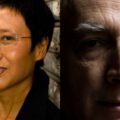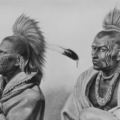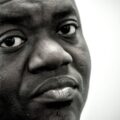Fiction Illuminating History: Paul Yoon’s Snow Hunters
Recently a call went out for contributors to a conference panel on the links between contemporary Asian American fiction writers’ experimentation and their groundedness in Asian American history and culture. While the call merely asked prospective panelists to consider these issues, the organizer hinted at a suspicion that much of the literature, at least in its experimental forms, is not particularly grounded in Asian Americanness. Obviously any novelist can create characters with Asian names and backgrounds—Stevenson and Harte and Steinbeck certainly did that—without involving those characters in issues affecting Asian America, such as immigration policy, labor niches, and assimilation. But the existence of literature courses in ethnic studies generally, and in Asian American Studies particularly, assumes that something in the literature of a historically marginalized racial community is particular to that community, even if that something is no more or less than shared immigration histories.
While only an essentialist would suggest that writers outside the community cannot possibly “get the story right,” such courses exist partly because white writers have often gotten the story wrong. But now, maybe, “the story” has been told well enough, and often enough, that sensitive readers outside the community get it; and now, as a result of that story becoming non-exclusive, writers inside the community feel free to venture into issues that are not specific to it. For example, a Korean American novelist might create characters who may or may not come from her community in a story of illness or disability, war or global warming—a story not focused on anti-Korean American racism.
In his novel Snow Hunters, Paul Yoon has done just that. To be sure, the central character is Korean and a principal secondary character is Japanese—but they are not Korean American, as Yoon is, or Japanese American. The story is not set in New York City, where Yoon was born, or in Massachusetts, where he works. It is set in a rural coastal village in Brazil, in the 1950s and early 1960s, where its protagonist, Yohan, migrates after spending time as a P.O.W. during the Korean War. The novel begins at the end of this long voyage by cargo ship, with the sight of a child on the shore, the girl Bia. It is a brief image, a glimpse only, of “a crown of hair and the length of a pale scarf gliding along the sky,” and before Yohan can fix the image in his memory it disappears, as Bia’s brother Santi chases her into the distance. Yet the image will come back to him often, as do memories of his youth in Korea and of the war and his imprisonment. Bia and Santi will flit into and out of Yohan’s life for nearly a decade. Yohan’s other important relationship is with a Japanese man, the tailor Kiyoshi, who has lived in the village since the end of World War II and with whom Yohan finds work and accommodation. The relationship between Kiyoshi and Yohan is a mix of master-apprentice, mentor-pupil, and father-son. From Kiyoshi, Yohan learns to tailor and mend villagers’ clothes, learns their language and customs and confidences.
Reviewers of Yoon’s fiction—this is his second book, following the 2009 collection of stories Once the Shore—have already cultivated a lexicon of adjectives and phrases to characterize it: “lyrical,” “elegant,” “spare,” “haunting,” “deceptively simple,” “quiet.” These types of characterizations are more commonly attached to the work of writers such as James Salter, Gina Berriault, and John Berger. That is to say, they are usually attached to white writers. And the elegant styles of these writers seem to derive from an assumption, at least, of an upper-middle-class privilege that shies away from politics and bustle. (Berger is of course a rare exception.) Any reference to a “writer’s writer” likely means one of these lyrical stylists. While it is true that several writers of color—Julie Otsuka, Jamaica Kincaid, Louise Erdrich, and now Yoon—have produced works described as lyrical, it is also true that most of these works are relatively recent, lending themselves to the myth of an assimilated “post-racial” America. James Baldwin, one of the most lyrical of American writers, wrote in 1979 that “for a black writer in this country to be born into the English language is to realize that the assumptions on which the language operates are his enemy.” Along those same lines, Toni Morrison, in 1992, described herself as “a black writer struggling with and through a language that can powerfully evoke and enforce hidden signs of racial superiority, cultural hegemony, and dismissive ‘othering’ of people and language.”
For writers as fluent and talented as these, though, what are the signs of linguistic enmity and struggle? Can we point to lines in Baldwin and Morrison that embody it? Can we point to lines in Yoon? Or perhaps the struggle is elsewhere in these writers’ books. Perhaps it is not in syntax and tone and rhythm (though for Baldwin at least it must surely be there too). Perhaps merely by writing about racism in the “king’s English” a writer of color lives the struggle, no matter the style. But finding the struggle in the style—finding, in a writer’s tone and rhythm, the horrors of racism and the resistance against it—would then open the possibility of writing justice and its glorious paradises.
Most likely the answer lies neither exclusively inside nor outside language but rather in a writer’s way of relating history and language. Yoon may create a lyrical other-world, but his fiction is solidly rooted in history. In Snow Hunters the Korean War displaces Yohan, just as the world war displaced Kiyoshi, putting the story spinning into motion. And yet that history, sculpted into memory, becomes part of the story’s haunted geography. Yohan “wondered what choice there was in what was remembered; and what was forgotten.” That first memory of Bia takes its place beside memories of Peng, his friend and fellow inmate in the prison camp. The beauties of oceans and islands are juxtaposed against wars and vanishing cultures.
A lyrical style can make such fiction too precious, as if each paragraph contains a sculpture and all the delicate sculptures add up to a beautiful image, none of whose parts matters more than any others. A suit hanging in Kiyoshi’s room, a rooftop survey of the village, a nurse’s kindness in a prison hospital—these and other glimpses into Yohan’s memories could form a beautiful, and beautifully written, mix of images taken from his life that act like nothing more than an image. Yohan, for example, studies an old photograph shown him by Peixe, the village church’s groundskeeper, in which a group of mostly Japanese people stand before a plantation house on the coast:
The plantation house was no longer recognizable. But it was the people in the photograph who seemed far more different, the style of their clothes and something else he could not articulate. Their postures, their stillness. Or perhaps it was knowing that they were no longer of the age when the photographs were taken. That the moment had already gone by the time their images were captured. That people aged, second by second, leaving themselves behind.
He had never been photographed before. He did not know what he would look like, did not know how he would appear on those small pale squares people held and framed and shared.
It is surely the aesthetic beauty in such sentences that stirs Yoon’s admiring reviewers. But it is history that provides the conceptual coherence, distinguishes memories, and makes the narrative move, if not always in a linear way. The photograph makes Yohan aware that he has never been photographed (an interior move), but the next sentence returns him to the prison camp (an historical move), where he saw “a young American wake from surgery and rise from his bed too quickly. His eyes . . . were wrapped in bandages and, disoriented, he knocked a tray from a nurse’s hand.” This memory is sparked by Peixe’s telling him the people in the photograph are mostly Japanese, that the plantation grounds had served, during the war, as a prison camp; and that, before then, the house had been converted into “a hospital for the mountain villages and for the factory workers who had been the victims of mechanical accidents,” had even been “a sanatorium for survivors of polio.”
It is worth noting that this is not the kind of fiction we talk about when we talk about “historical fiction.” Well-known landmarks and historical figures make no appearances here. Douglas MacArthur, Pusan, Syngman Rhee, and the Cold War are not mentioned. Yoon’s characters are invented, and even if the wars and nations and oceans behind them are real, the particular settings are entirely fictional. Yoon told one interviewer that he felt challenged by a need to create “not just one but two places I knew nothing about.” While few specifics of his research into Korea and Brazil appear in the novel, the work gave him “a sense of the environment, the tone and mood of those years.” Most surprising is his claim that he feels no obligation to be accurate: “Part of the greatness of fiction, for me, is that it allows us to see the world in all these altered lights. So knowing I was creating, from scratch, an entirely fictional POW camp as well as an entirely fictional Brazilian port town was ultimately thrilling and freeing.”
Or maybe it isn’t so surprising. In recent years, creative nonfiction has nudged fiction from the center of contemporary literary culture, and several trendy (white male) writers have claimed an imaginative high ground there. Fiction is boring, David Shields and John D’Agata insist, and they demand a right to exercise their imaginations in lyric essays or creative nonfiction—even if this means that certain facts are replaced by invented details. The arguments in favor of creative nonfiction cast Shields and D’Agata as radical transgressors, bold visionaries of a new kind of writing that exalts the individual consciousness while asserting that truth is conditional and relative, that facts are negotiable.
To observe that these visionaries are privileged, white, and male risks a resentful essentializing. However, it is also essential to understanding this new credo. Curiously absent from these discussions about creative nonfiction are critics such as David Stoll, who publicly attacked Rigoberta Menchu’s autobiography because it fit the facts to a political agenda. Menchu may or may not be guilty of such doctoring—the point is that Shields and D’Agata proudly boast of doctoring to fit agendas, and are hailed for their genius. While writers from privileged classes such as Shields and D’Agata are free to doctor the truth at will, and be praised for it, Menchu is writing testimonio, a Latin American counterhistory that critics Kay Schaffer and Sidonie Smith identify as a collective narrative of the poor and indigenous. There is little at stake for the personal truths that Shields and D’Agata doctor, but historical truth itself is at stake in counterhistory. This is why writers such as Menchu are so harshly scrutinized by critics. They challenge not only the truth of a contained narrative, but the meta-truths of western history. It is not so much a double standard as a unique metamorphosis of literary genre around identity and personae. On the new high ground of creative nonfiction, writers such as Shields and D’Agata have planted a flag that is distinctly white and male. The politics of authority and genius—and the kind of history one is allowed to question—crowds out writers of color, whose narratives serve to upend the historical structures of power, often grounded in a self-serving untruth. Where the particular details of history fail to fit into their narrative, those facts are changed; it’s a technique of control and hegemony that has been well-documented by postcolonial theorists.
For writers of creative nonfiction, creativity involves tinkering with history as much as it involves constructing their own personae. For writers of color such as Yoon, though, creativity is something else. Yoon uses his lyrical style to give depth to the personal element, while leaving historical facts in place. As critic Terry Eagleton might say, only liberals such as Shields and D’Agata would dare to boast of the indeterminacy of truth, while writers from historically marginalized groups know that some truths—the ravages of war and displacement on the body, for example—are very real. The fact that a new lyricism has become widespread among contemporary writers of color represents not an aestheticized aversion to history but rather a new, truly radical engagement. Paul Yoon is the writer that David Shields dreams of becoming.
Snow Hunters is arguably more engaged in history and racial politics than most “socially conscious” novels and critical scholarship. By getting the “sense” of his historical and geographical settings, Yoon is able to create characters who are affecting because they are highly individualized. As individuals, Yoon’s characters linger in his readers’ memories. He makes of the Brazilian coastal village a world both unique and representative: unique in its extracting the individuals Yohan and Kiyoshi from the immediate consequences of war; representative in its defining the characters Yohan and Kiyoshi through memories of war, political violence, and larger historical narratives.
Unsympathetic readers may complain that nothing happens in the novel, that Yohan moves to Brazil and learns Kiyoshi’s trade and settles into a quiet, unremarkable life in the village; that the war serves no greater function than to be the motive for Yohan’s seeking refuge. In this reading, Yoon retreats from history no less than Yohan, and the quiet, lyrical sentences merely ease the retreat. Even less sympathetic readers may complain that the beautiful sentences mask Yoon’s raiding of Latin America for an exotic setting—after all, the adjectives applied to the novel by its admirers describe Yoon’s sentences, not his politics.
These are not entirely unwarranted criticisms, but they marginalize Yoon’s most remarkable accomplishment. Yoon’s characters are unremarkable because they are individuals, but also because they are symbols. Considered separately, most events in the book are ordinary, unworthy of recorded history. To say that this is true of the moments of all lives is still not to earn a book for Yohan’s story, but it is Yoon’s prose style that redeems this banality. Yohan’s first impressions of the photograph that Peixe shows him, for example, are merely reflections on the gap between the moment captured and the many moments that have aged those subjects since then. Yet these personal impressions are bracketed by historical specificity: the plantation house and the American soldier waking from surgery.
Social relations in this fictive world reflect social relations conditioned by history without being bound by them. Did any Korean soldier who had been held in a prison camp move to a Brazilian port town and take up the residence and the trade of an expatriate Japanese tailor? Possibly it never happened; possibly it did, just as Yoon tells it. Here the truths of what might have happened in history become the particular truth of what is narrated in fiction.
Against the backdrop of the purported journalistic truthfulness of creative nonfiction, Shields and D’Agata presume to exercise their imaginations despite the historical record—but this compromises the historical backdrop, creating a world that, even if it amuses, reduces to an unsatisfying indeterminacy. Such indeterminacy is a prerogative of the privileged classes, for whom history has always been a malleable thing, useful for their continued place in the social hierarchy. Writers of color have no such luxuries.
The king’s English (and its official narrative) belongs to the king and his class. The marginalized writer, working from a social disadvantage, thus builds on the ground of history a foundation that is openly fictional, against which she conjures characters and stories that are more true under the cover of falsehood. But if fiction tells a lie that tells a truth, then why does creative nonfiction feel compelled to lie too? It does so merely to prove that truth is relative or conditional. The writer of creative nonfiction colonizes both truth and fiction in the name of a self-serving truth. This is not the radical move that its admirers claim it to be, but a markedly conservative act, undermining the counternarratives of marginalized identites. The lyric writer of color who masters the colonizer’s language, like Yoon, and turns it upon itself, gains a new humanizing access to truth in the form of fiction—this is the truly radical move.
In this passage, for example, Yohan is crossing the wartime Korean countryside in a cargo train full of soldiers. He slips into and out of dreams, so that the images he sees, or dreams that he sees, assume an ambiguity that in turn links them to memories of his father. In one image, he sees moonlit figures:
It was a family, perhaps, a man and a woman and their children, all of them standing in the snow above the wreckage of a town.
The man dipped into a collapsed rooftop as though he were swimming. His wife gathered her skirt against her thighs as she climbed a hill of rubble and white, the upturned bowl over her head swaying with her steps. Two boys appeared from the depths of a crater, their hands rising to grab the rim.
Yohan recalls his father who once, believing he was alone, leapt in a field, clicking his ankles over some very private joy: “And he understood that he would never be able to hold all the years that had gone in their entirety. That those years would begin to loosen. That there would come a time when there was just a corner, a window, a smell, a gesture, a voice to gather and assemble.” Immediately he returns to an awareness of his surroundings, the train chugging through a snowy valley, a soldier beside him leaning against a rifle. He and this soldier, Peng, would, in a year, “be standing in an orange grove with a patrol unit, frozen, watching a single goat on a ridge as a whistling filled the air and the land exploded, burying them.” But now, on the train in the valley, he and Peng look back upon the field, at the family whom Peng now calls “snow hunters”: “and together they watched the scavenging family for as long as they could, the way they moved across the snow like acrobats, their bright forms growing smaller in the night as the train sped.”
Can a dream of wartime violence be any worse than the war itself? Yoon blurs the distinctions, attributing both the dream and the experience of war to the same person. In this way a dream, a personal construction of the imagination or of memory or of both, can revisit or reconstruct historical truth. There is no quarrel between history and imagination, as there is for Shields and D’Agata, and no tension among history and memory and imagination.
Is Yoon’s work, then, predictive of the future of fiction by writers of color? The organizer of the panel on Asian American literature would probably not regard Snow Hunters as experimental, feeling perhaps that it recalls too much of the style of those “writer’s writers,” almost all of them white, most of them privileged, and few of them politically engaged. Moreover, it looks nothing like the fiction of most of Yoon’s fellow novelists of color. Yet by inhabiting the colonizer’s language, Yoon, like Baldwin before him and like Otsuka and Erdrich and a few others beside him, creates stories and relationships in which history and the imagination serve each other. A time may be coming—likely soon, given the evidence of these younger authors—when to say that we will not assume that a “writer’s writer” is white. If for no other reason than that that time has not yet arrived, Yoon can still be rightly and admiringly regarded as the best kind of experimental writer.
About John Streamas
John Streamas is an associate professor of American Studies and Critical Culture, Gender, and Race Studies at Washington State University. His scholarly and personal interest is the cultural politics of time and space.






